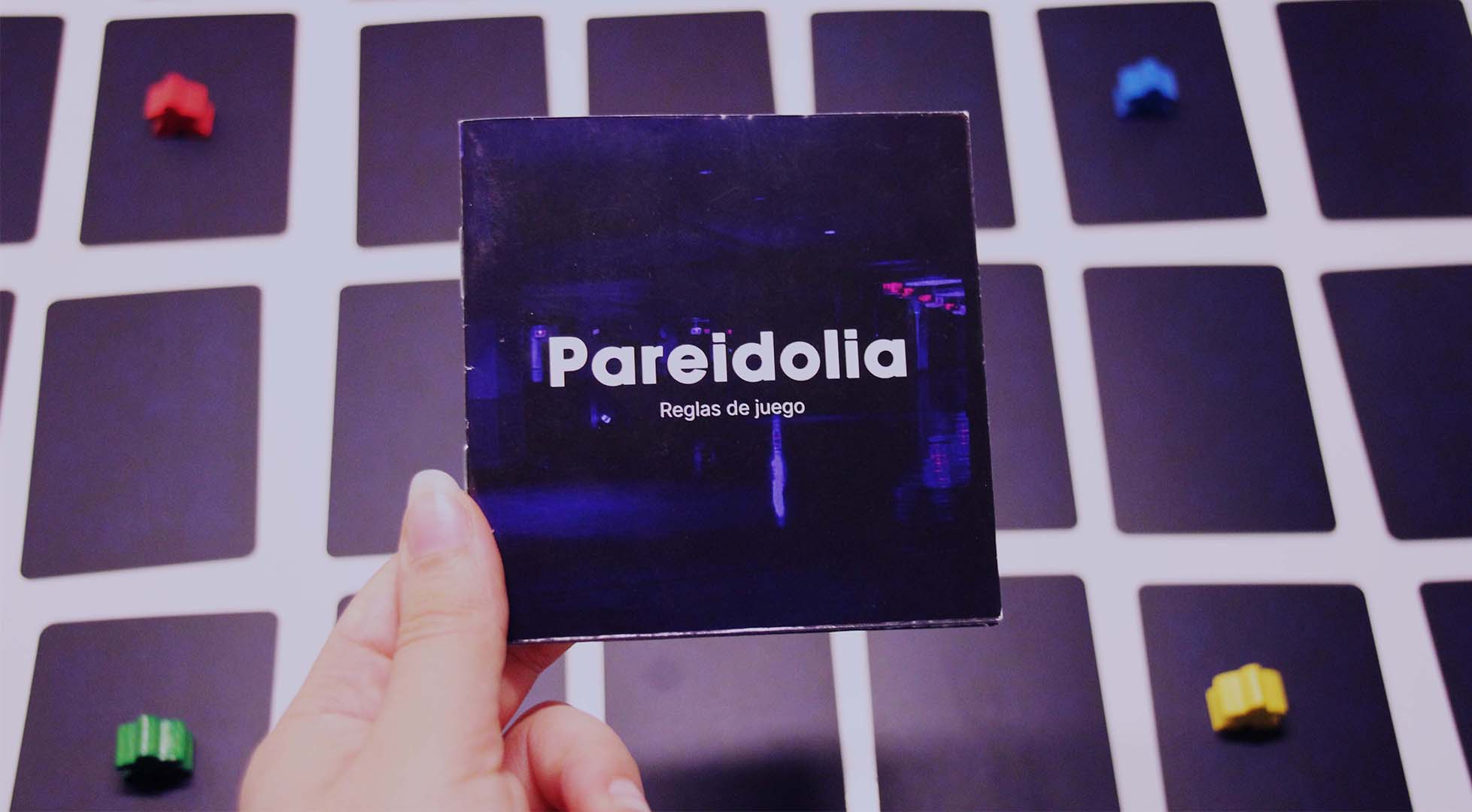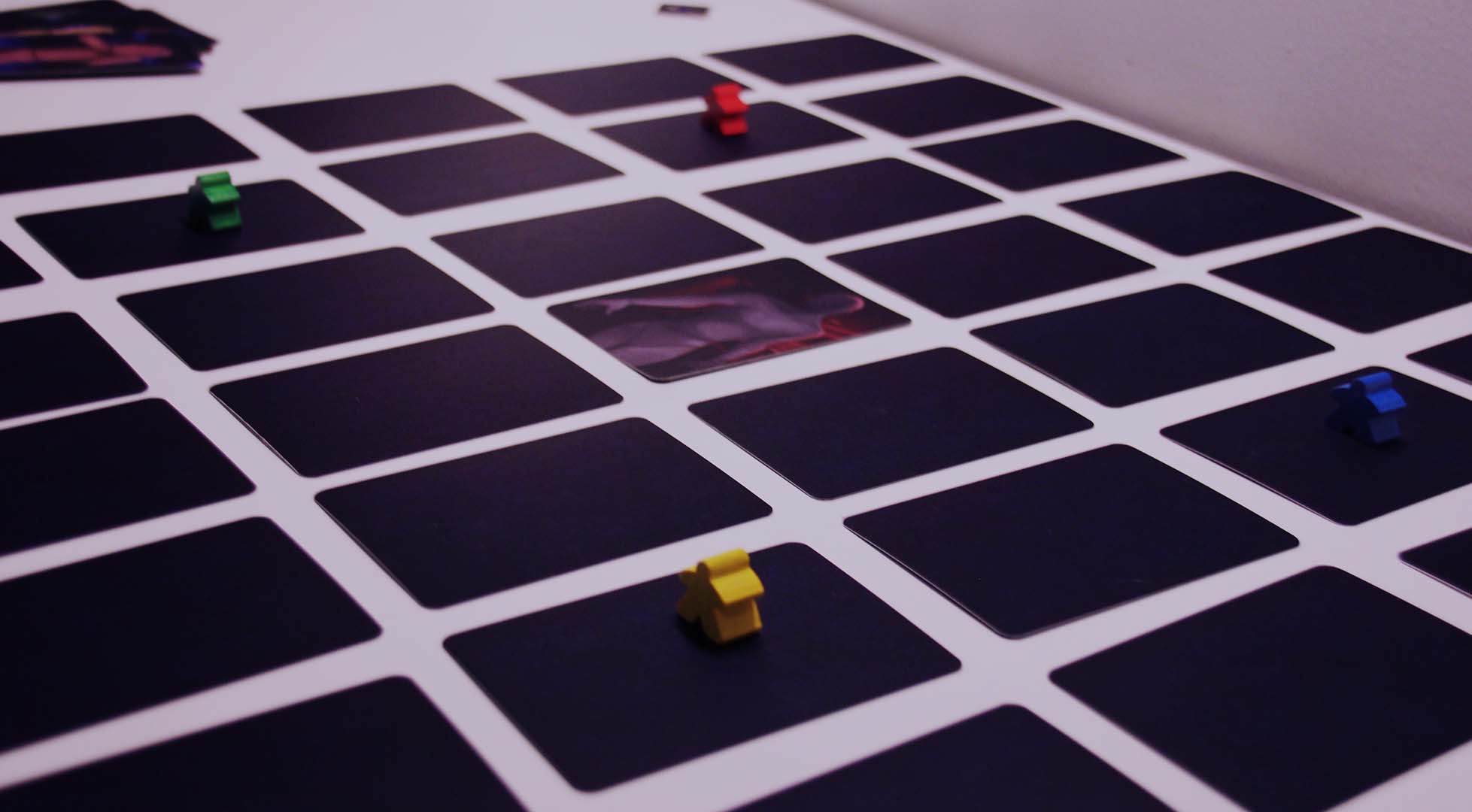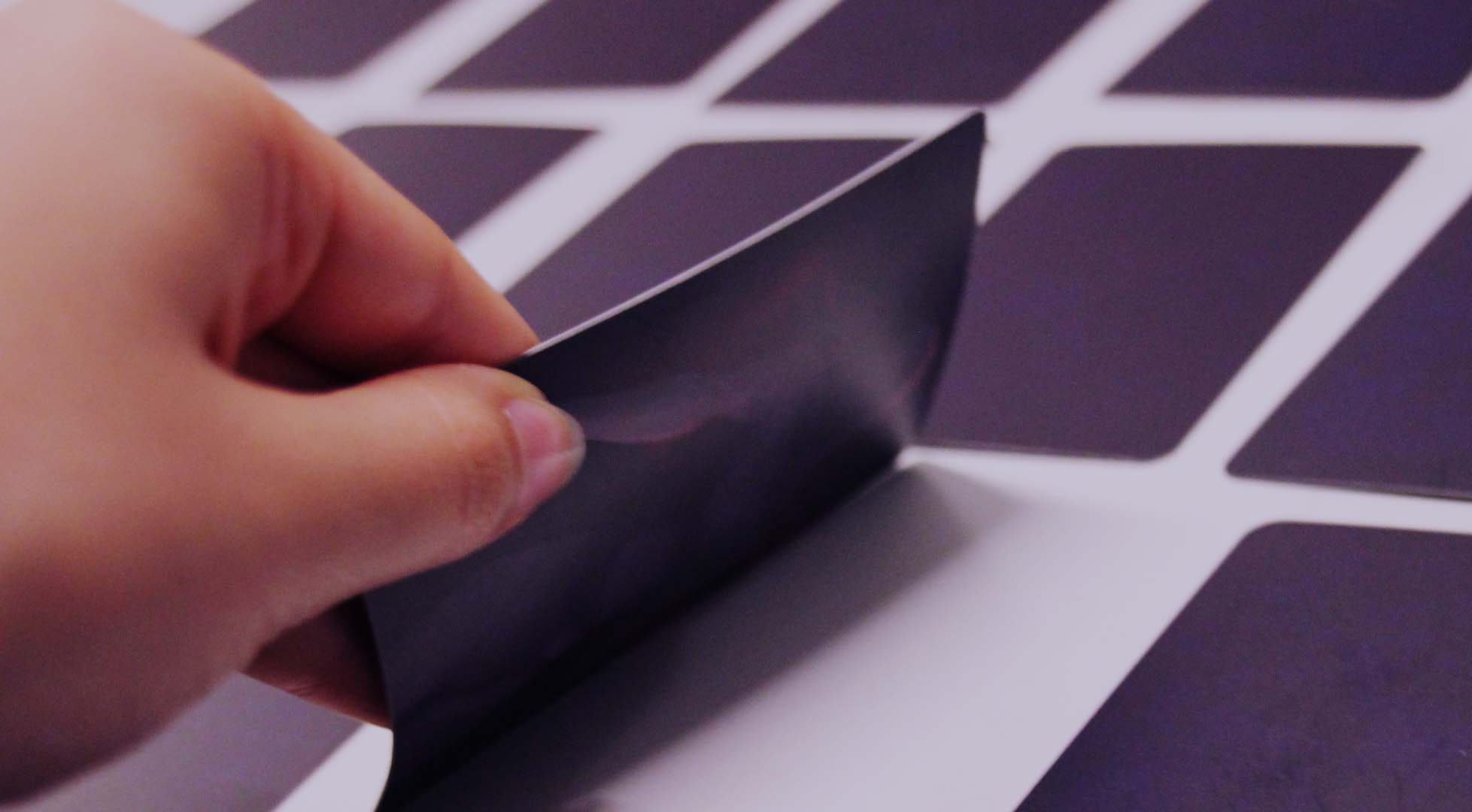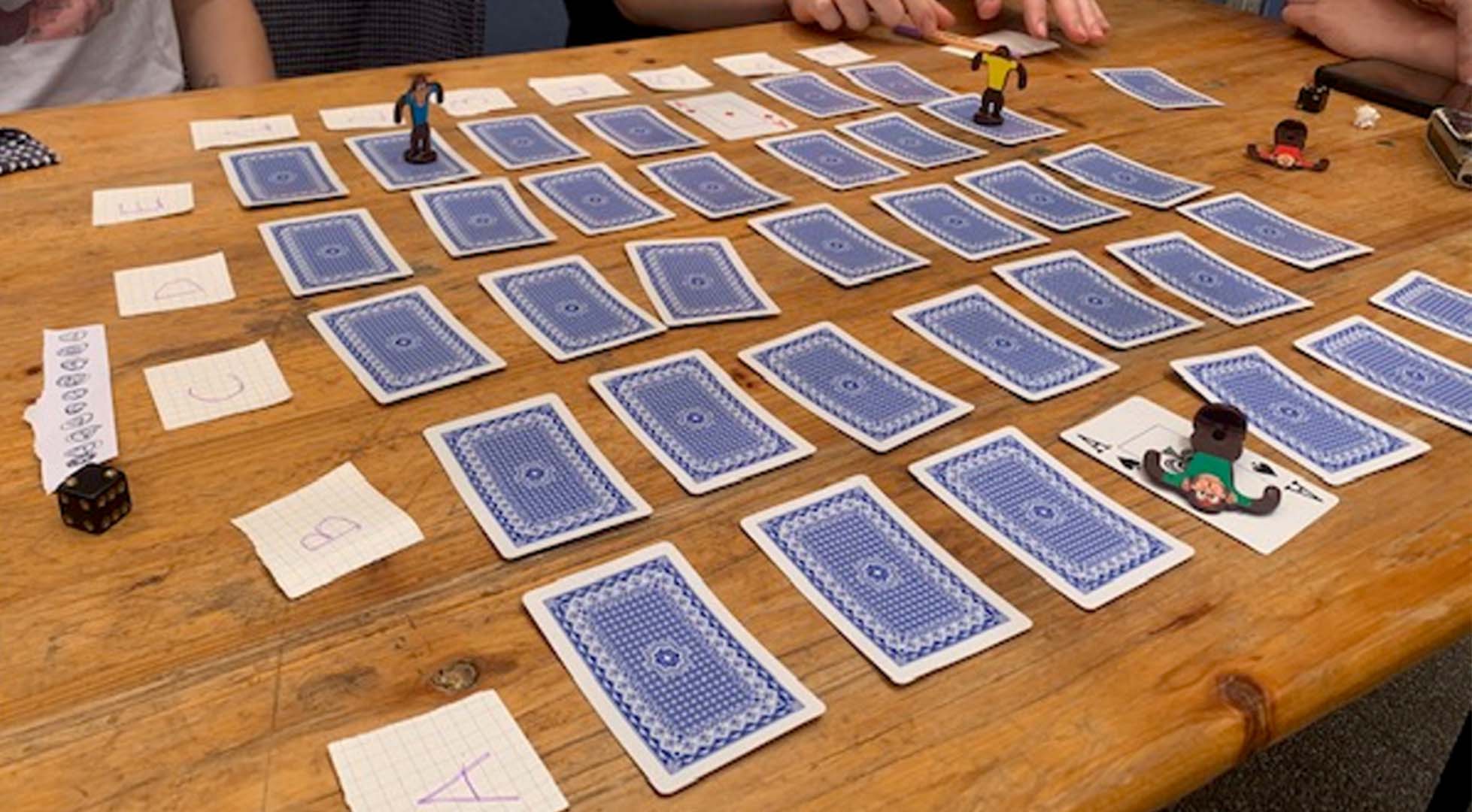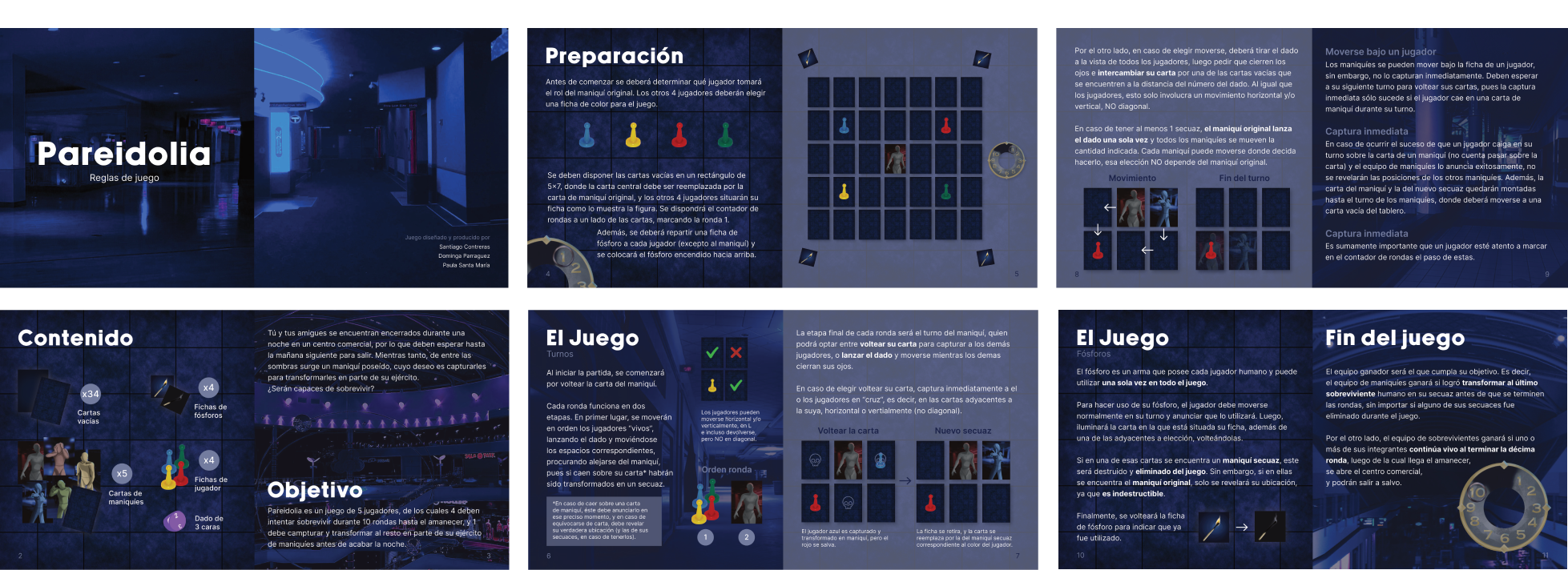Summary
Pareidolia is a 5-player board game where one of the players takes the role of an evil mannequin aiming to convert all humans into a mannequin army, while the others play as a group of friends trapped overnight in a shopping center, struggling to survive until dawn.
Type: Board game
Role: Game Designer
Team: Santiago Contreras (Design & Art)
Dominga Parraguez (Design & Art)
